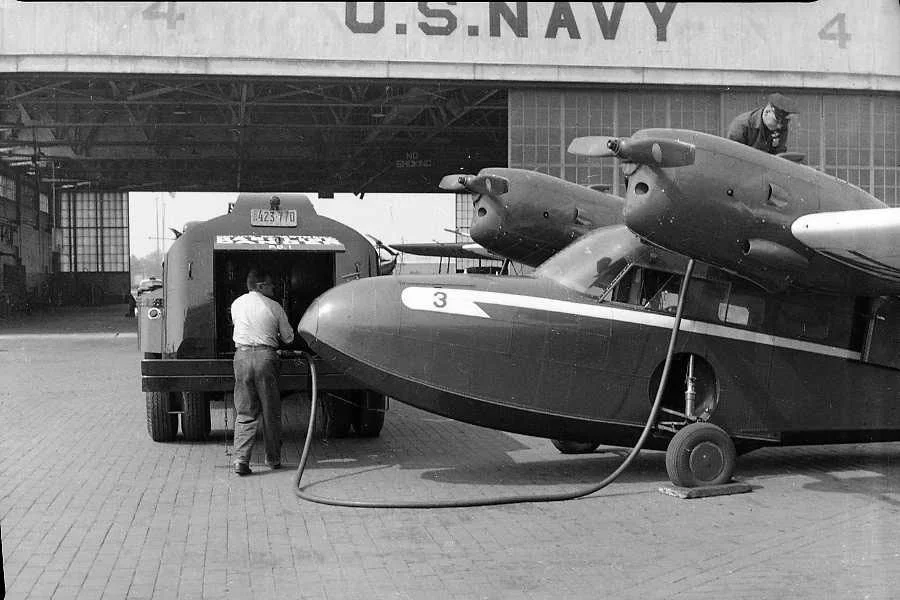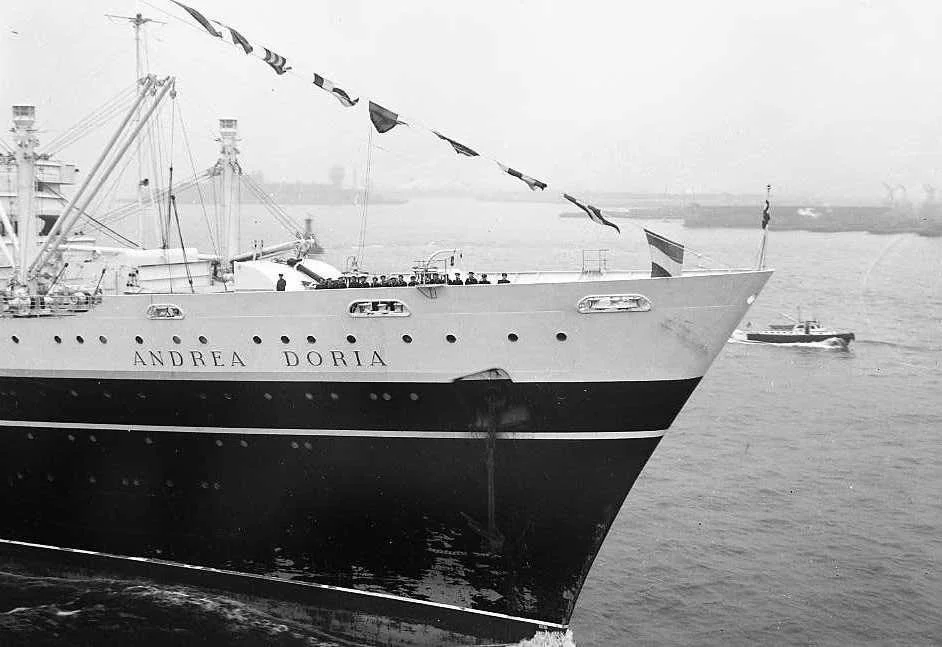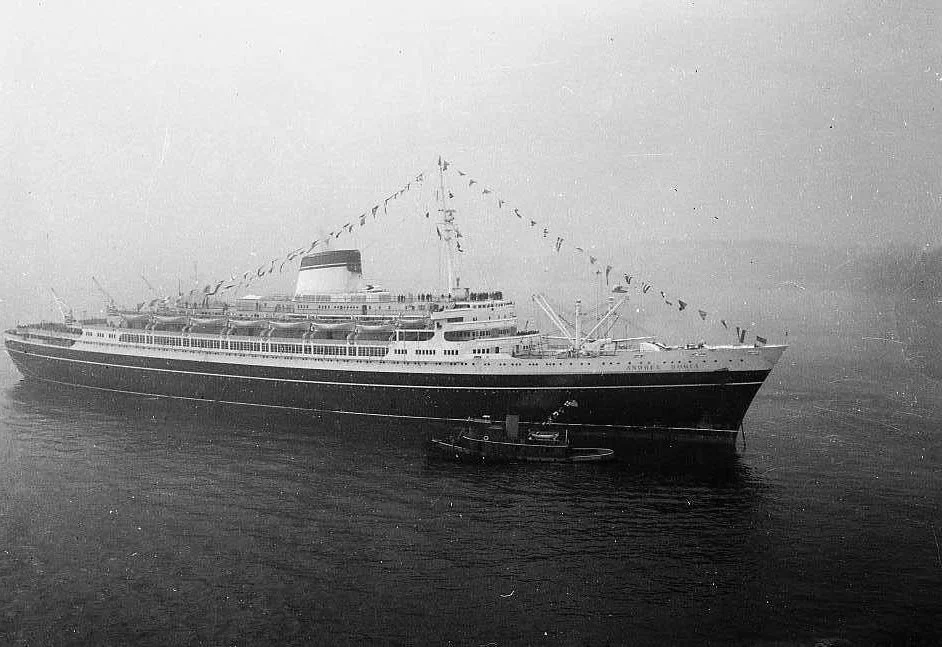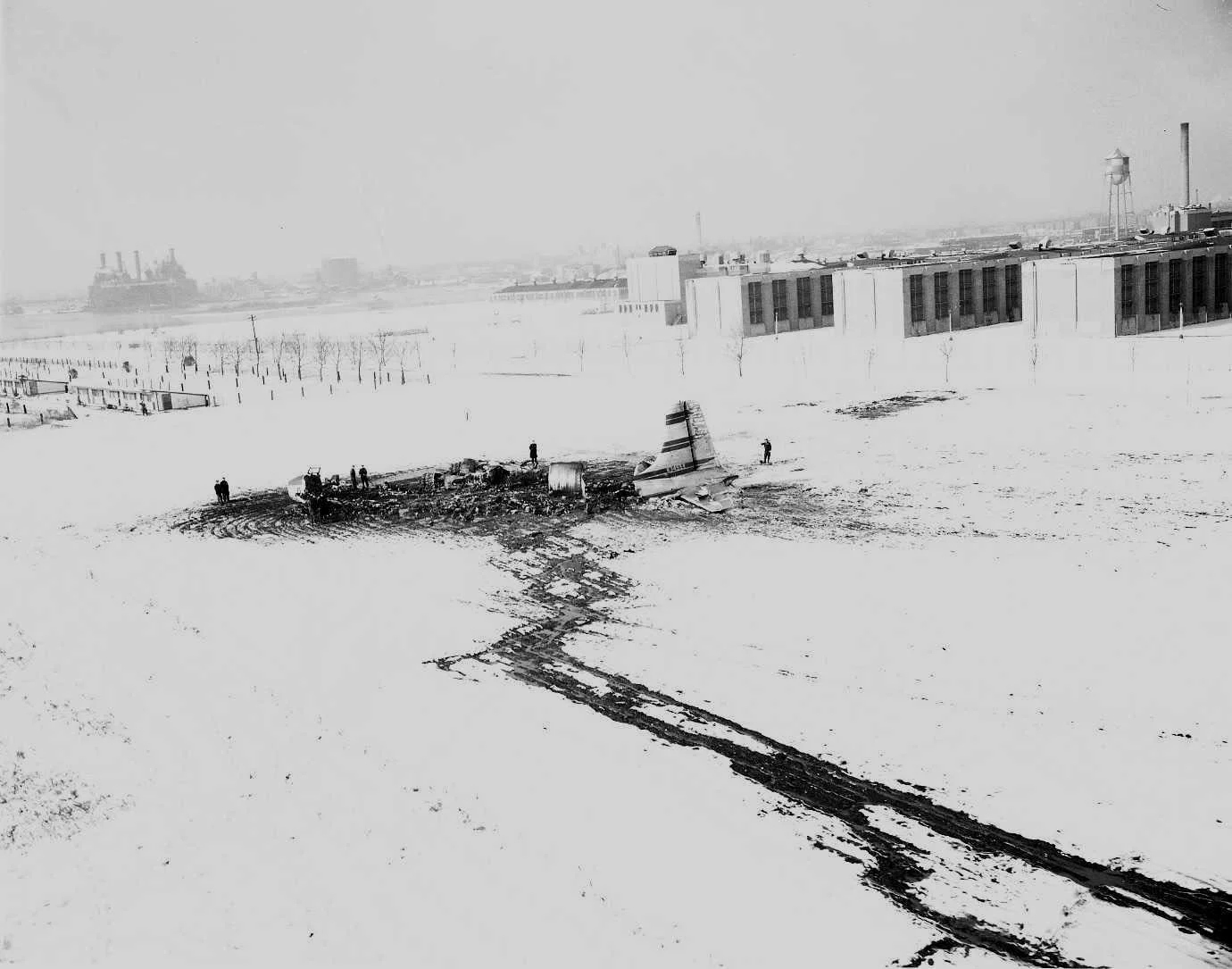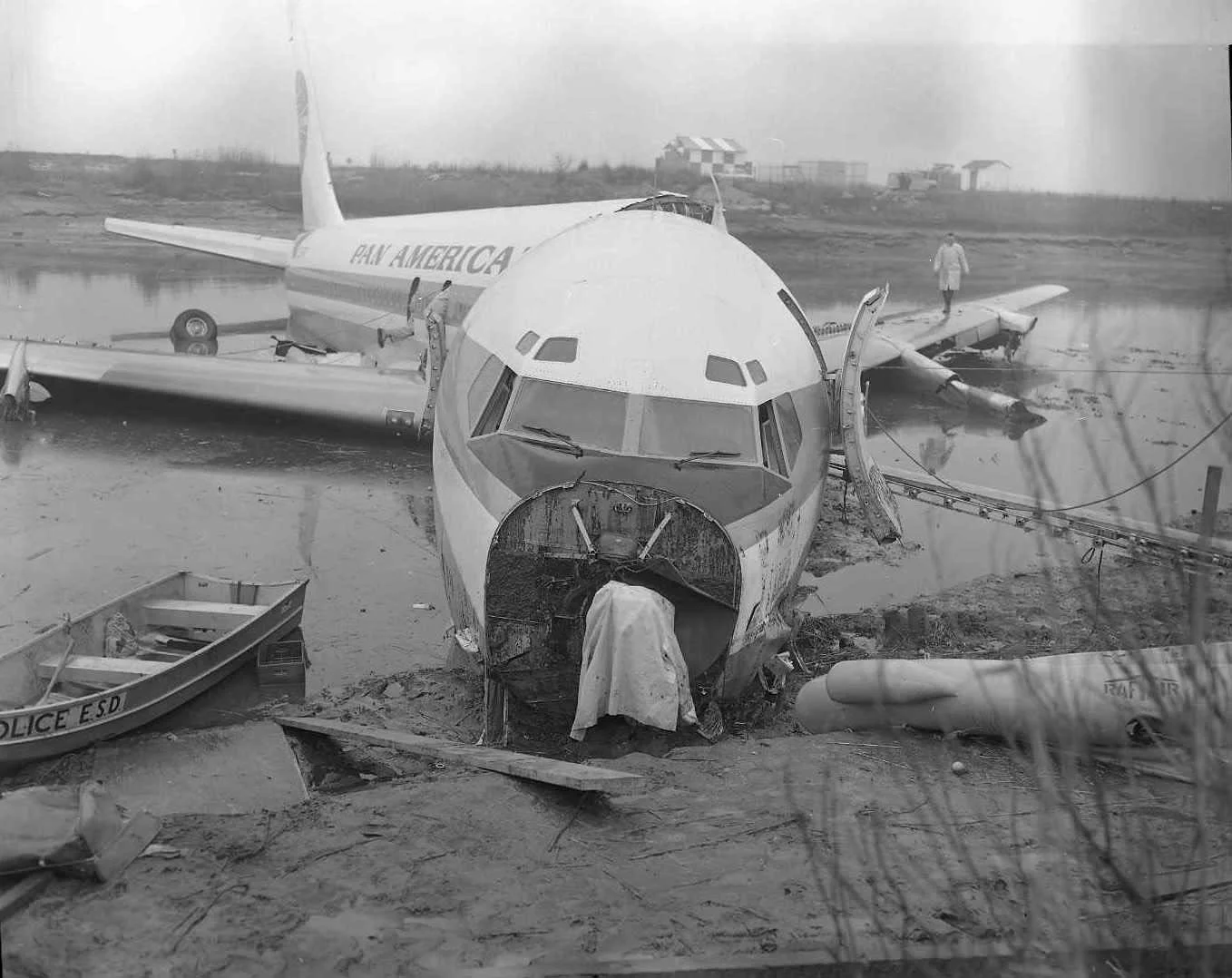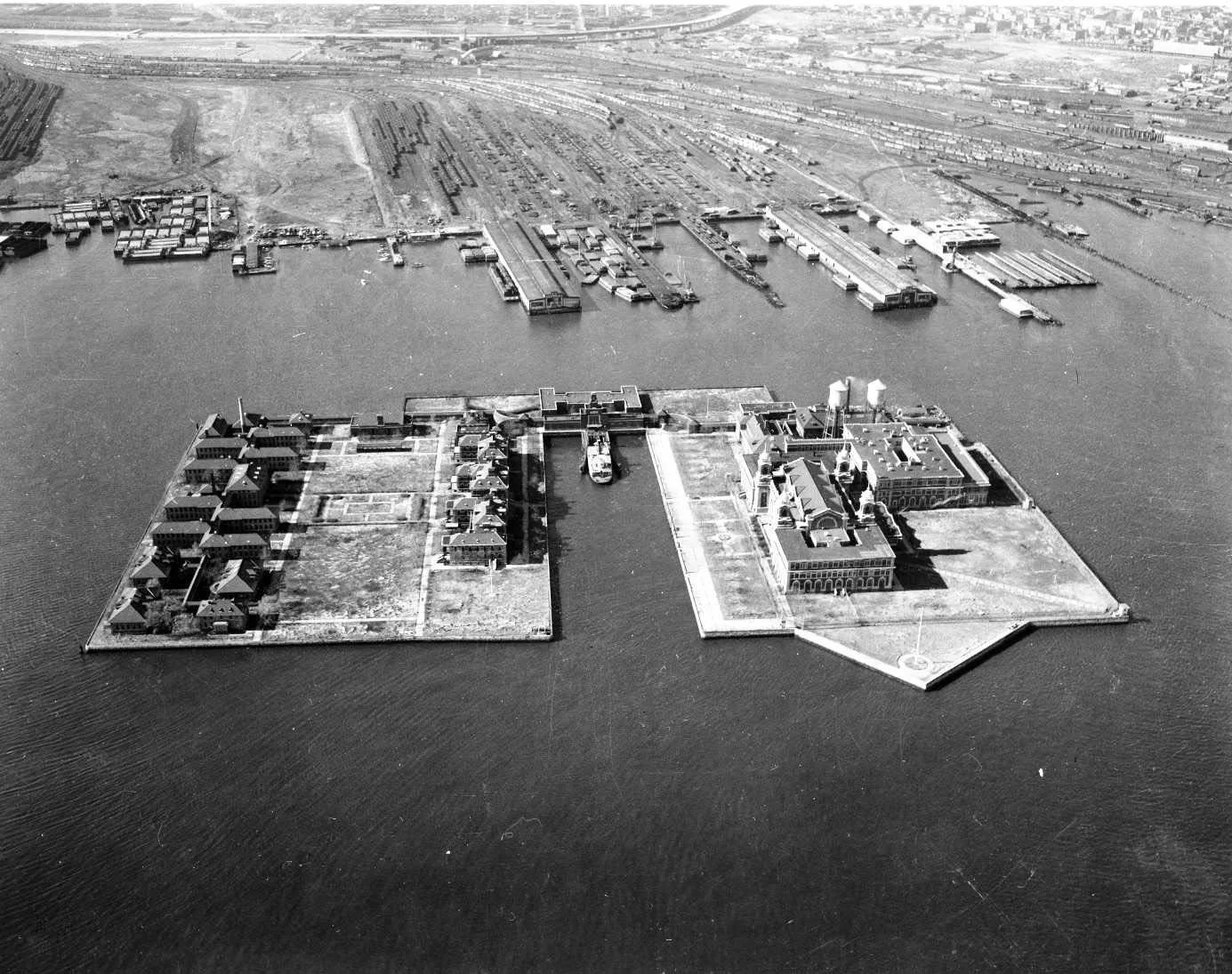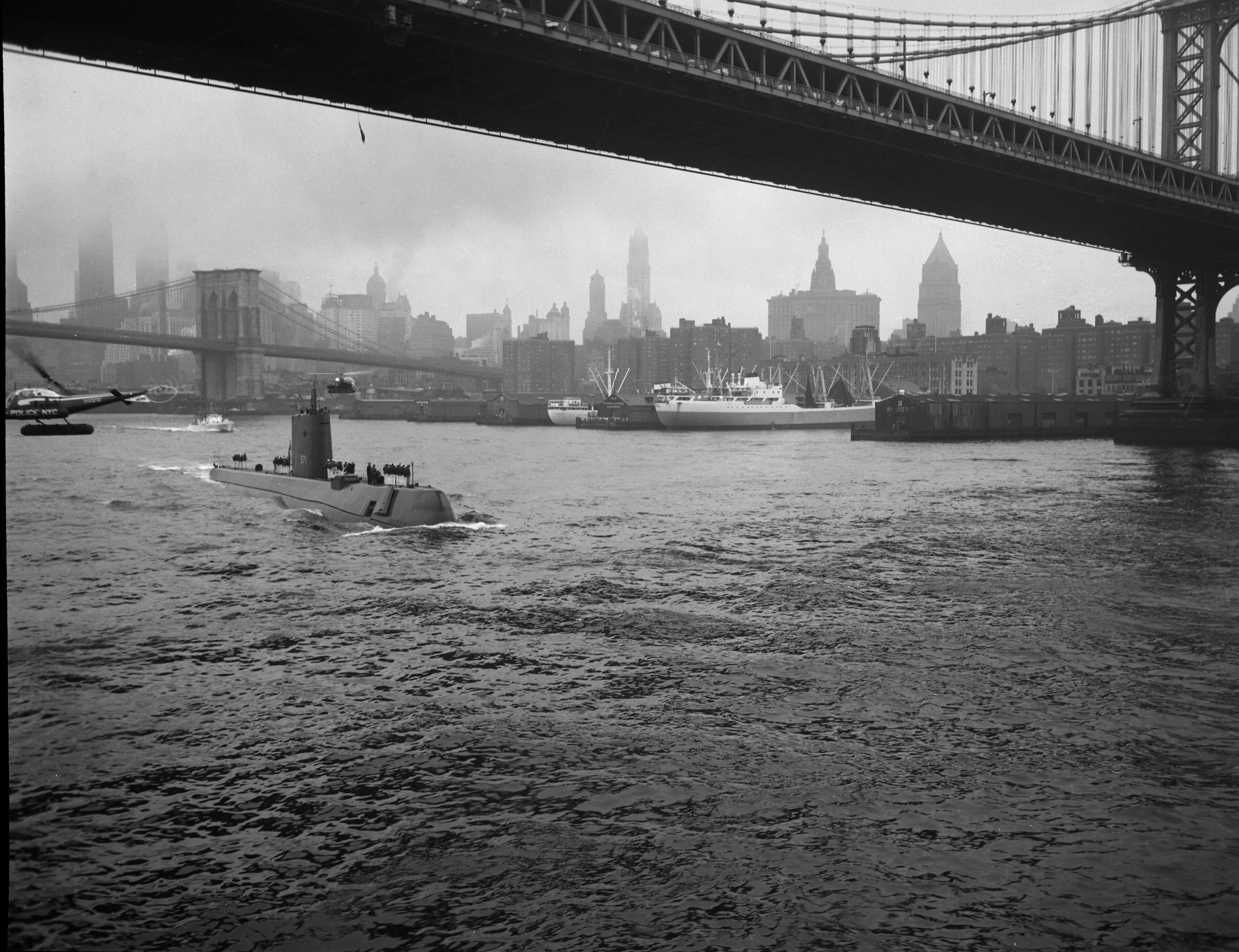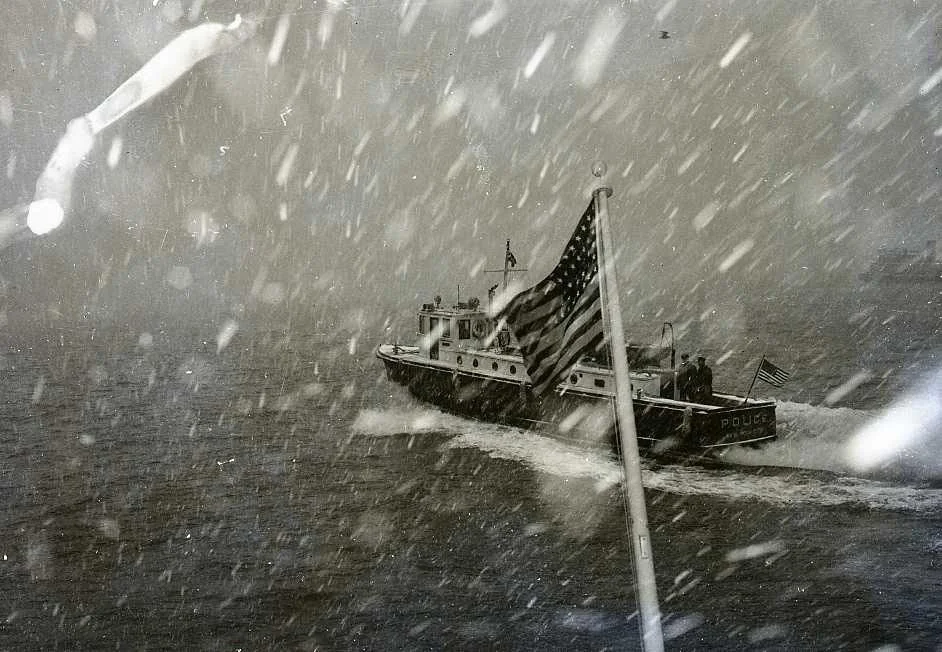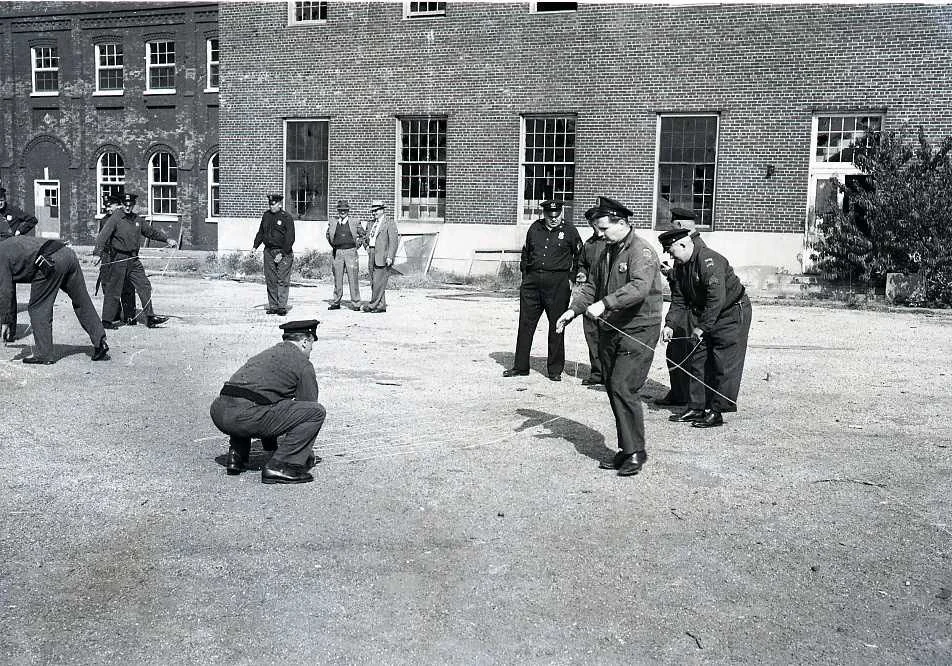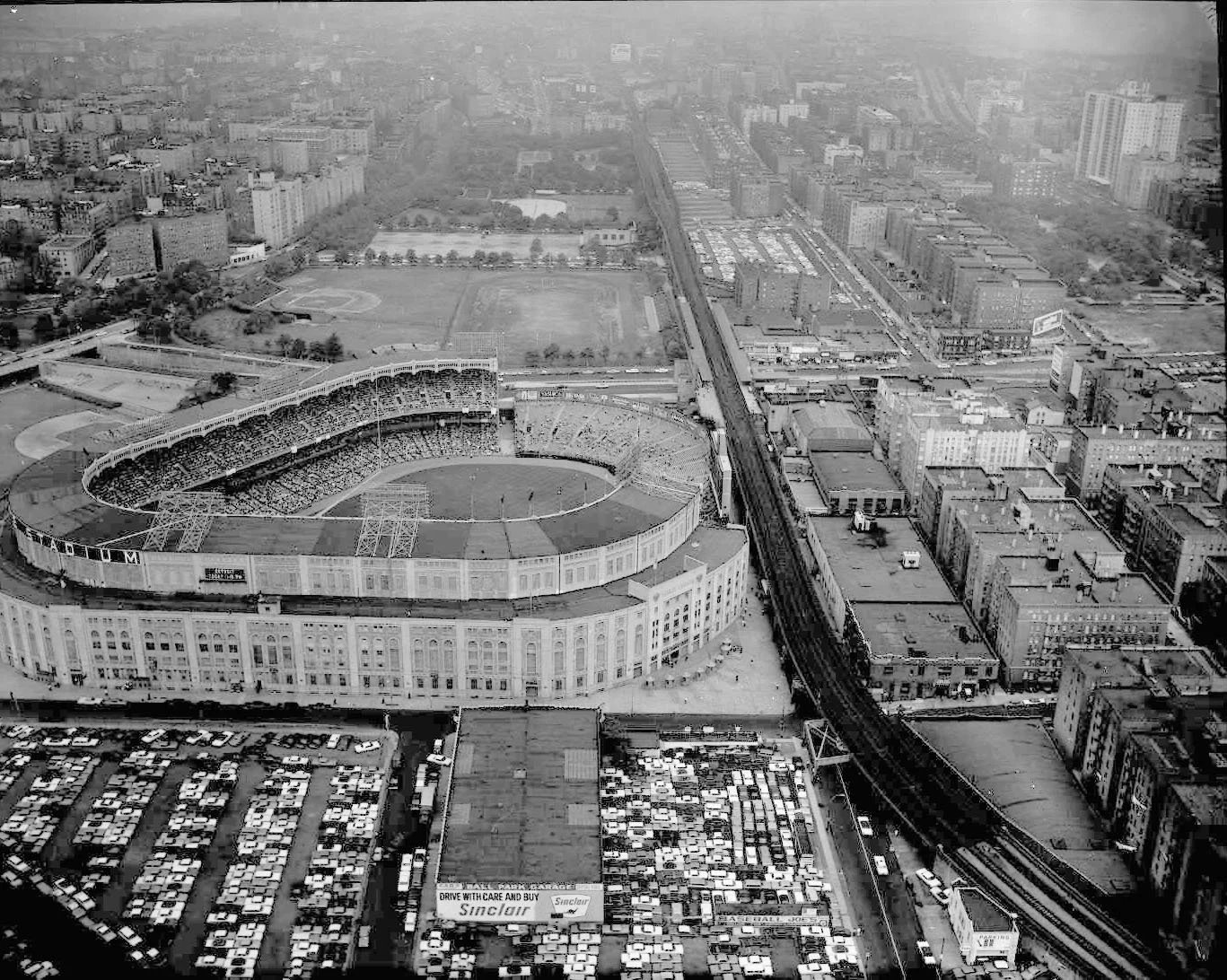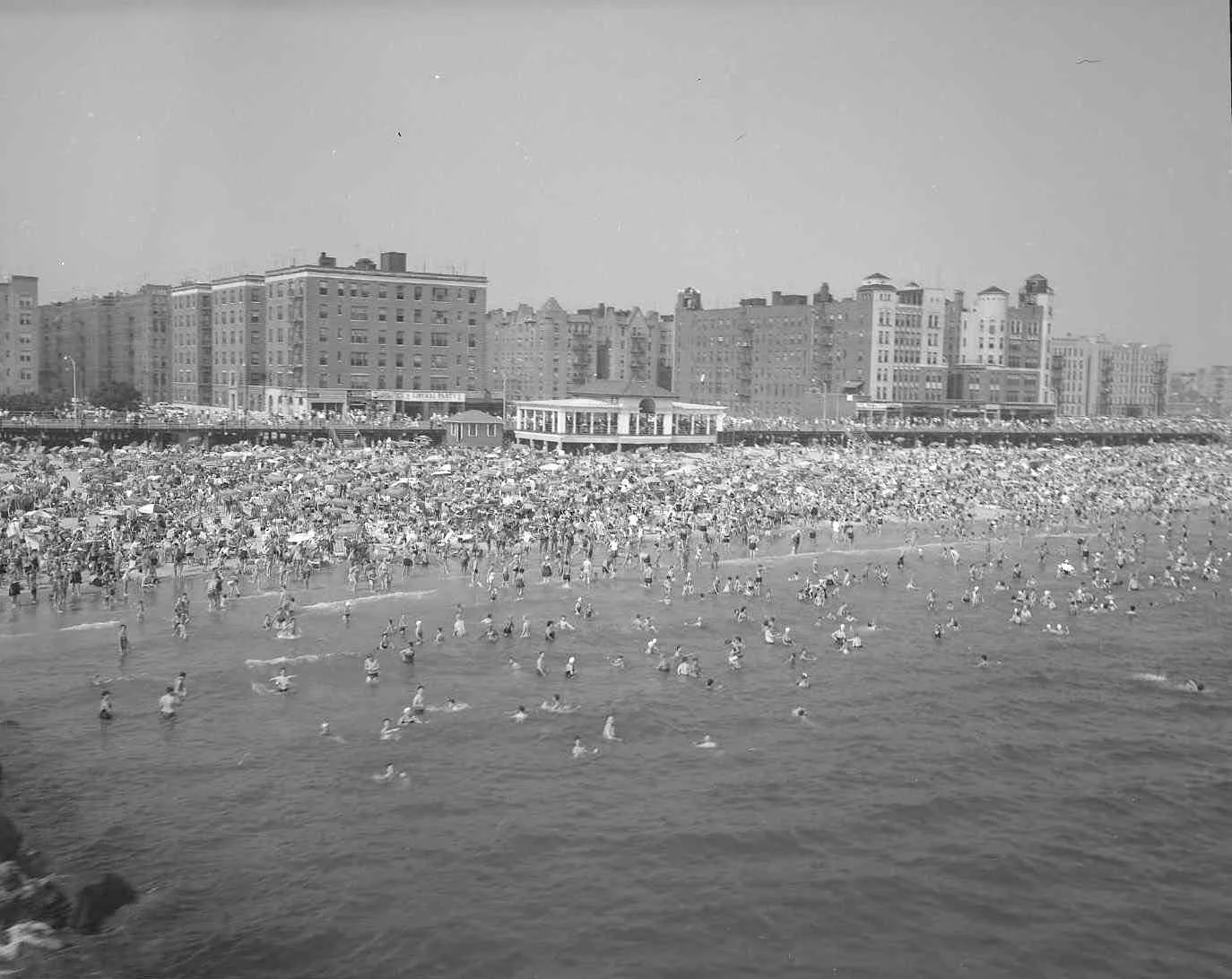REC0116_A_764: Statue of Liberty with Manhattan in distance, ca. 1974. NYPD Aerial Unit Collection, NYC Municipal Archives.
In 2011, the Municipal Archives accessioned from the New York City Police Department (NYPD) a vast collection of historic photographs. The bulk of the NYPD photographs pertained to criminal investigations and dated from 1914 to 1975. This was a substantial addition to the Archives’ collection of records related to the administration of criminal justice—arguably the most comprehensive in the English-speaking world.
When accessioning and processing the collection, City archivists discovered some images dated to the late 1880s, and that the overall significance of the photographs extended well beyond documentation of criminal activity. The collection provides a unique perspective on the workings of the NYPD and how they integrated photography into daily operations. This week, For the Record focuses attention on a separate collection of photographs created by, or for, the NYPD Aviation Unit.
REC0116_S-44_063: Biplanes spraying aero insect control, n.d. NYPD Aerial Unit Collection, NYC Municipal Archives.
REC0116_E-8_496: View of airplane being fueled, Brielle Avenue, Staten Island, New York, n.d. NYPD Aerial Unit Collection, NYC Municipal Archives.
REC0116_E-26_030: View of man dangling from helicopter, n.d. NYPD Aerial Unit Collection, NYC Municipal Archives.
The NYPD established the Aviation Unit in 1929 at Floyd Bennett Airfield in Brooklyn. Originally created in response to the increase in air traffic during the 1920s, it grew to include rescue operations, firefighting, port security, and tactical support. At first, the NYPD maintained only fixed-wing planes, but in 1948, they introduced helicopters to the fleet. Some of these first Bell Helicopters were outfitted with floatation devices to make water rescues possible and today, the NYPD has created an advanced Air and Sea Rescue Unit. Since 1954, the Aviation Unit has relied solely on helicopters for air support.
The collection came to the Municipal Archives by way of an NYPD Pilot, Officer Danny J. Edling. The negatives (said to be rescued from a dumpster) were previously stored in an officer’s locker at Floyd Bennett Field and entrusted to Officer Edling, who had an interest in the Unit’s history. Hearing about the NYPD photographs accessioned by the Municipal Archives, Officer Edling reached out and transferred the items in his care to the Municipal Archives in 2014.
REC0116_D-22_403: Aerial view of City Hall area, ca. 1969. NYPD Aerial Unit Collection, NYC Municipal Archives. (Note the construction of the Twin Towers underway in the upper left.)
The 3,631 negatives consist mainly of aerial photographs, which are believed to have been taken by NYPD Aviation Unit officers, dating between 1935 and 1982. Also included are images of significant events related to the daily workings of the Aviation Unit including funerals, award dinners and new vehicle purchases—even a departmental family outing to Coney Island. There are also a number of stunning aerial images of ocean liners coming into New York Harbor, perhaps on their maiden voyages, including the ill-fated Italian ship, Andrea Doria ca. 1953 and the German ship, S.S. Bremen in 1935.
REC0116_S-32_019: Ship Andrea Doria in water, ca. 1953. NYPD Aerial Unit Collection, NYC Municipal Archives.
REC0116_S-32_019: Ship Andrea Doria in water, ca. 1953. NYPD Aerial Unit Collection, NYC Municipal Archives.
REC0116_E-45_148: View of police at scene of crash, n.d. NYPD Aerial Unit Collection, NYC Municipal Archives.
Another significant theme is investigations of aviation disasters. The Federal Aviation Administration (FAA) was not formed until 1958, but even after its creation, the NYPD continued to investigate crashes in New York City. Notable accidents include Northeast Airlines Flight 823, which crashed shortly after take-off in snowstorm on February 1, 1957. The DC-6 clipped trees on the edge of Rikers Island and crashed outside the fences of the prison. Prison officials and inmates rushed to help the passengers and of the 101 people on board, there were 20 fatalities. Of the 57 prisoners who assisted in the rescue efforts, 30 were released and 16 were given reduced sentences by the parole board.
REC0116_C-18-1_052a: View of Northeast Airline Flight 823 crash and removal, Rikers Island, February 2, 1957. NYPD Aerial Unit Collection, NYC Municipal Archives.
REC0116_C-43_250: Close-up view of plane crash—Pan American N779PA, John F. Kennedy International Airport, April 7, 1964. NYPD Aerial Unit Collection, NYC Municipal Archives.
Also documented are Pan-Am flight 212 from San Juan Puerto Rico, which overshot the runway at JFK on April 7, 1964 (no fatalities); and the December 16, 1960, mid-air collision that resulted in 134 deaths. United Airlines Flight 826 bound for Idlewild (now JFK) and TWA Flight 266 traveling to LaGuardia Airport collided over Staten Island. The TWA Lockheed L-1049 Super Constellation crashed in Miller Field on Staten Island, while the UA DC-8 crashed at the intersection of Seventh Avenue and Sterling Place in Park Slope, Brooklyn. For more on this horrifying accident, see the 2019 blog: “Death from the Skies Over Brooklyn.”
REC0116_C-29_206a: View of plane crash—TWA Super Constellation, Miller Field plane crash site, Staten Island, December 16, 1960. NYPD Aerial Unit Collection, NYC Municipal Archives.
REC0116_E-2_450: Aerial view of building fire, n.d. NYPD Aerial Unit Collection, NYC Municipal Archives.
The Aerial Unit collection came with very minimal information about the images. Some negative sleeves included the date and other descriptions, but more research will be needed to identify significant events. A photo file index, which is partially complete, includes material information from some of the negatives between the years 1971 to 1982 and a listing guide. The collection was originally arranged with an alphabetical system that was used to identify possible subject terms. For example, “Homicides,” “Heliports,” and “Harbor” would all be filled under “H” and then subsequently assigned a chronological number under that letter. The listing guide gives some of the subject terms for the alphabetical system, but not all of the meanings are included. Due to this, the collection was kept in the original order but updated with a numerical numbering system starting at 1 and proceeding to 3,638 for ease of location within the collection.
Readers are invited to take a look at these samples from the collection.
REC0116_E-53_118: Aerial view of Ellis Island, n.d. NYPD Aerial Unit Collection, NYC Municipal Archives.
REC0116_F-20-2_012: View of United States Navy submarine 571 (USS Nautilus) under Manhattan Bridge, 1958. NYPD Aerial Unit Collection, NYC Municipal Archives.
REC0116_F-20-2_006: View of the USS Nautilus (SSN-571) under the Manhattan Bridge, 1958. NYPD Aerial Unit Collection, NYC Municipal Archives.
REC0116_V-3_737: Police boat on the water in the snow (Harbor event with CO's and Gus Crawford), n.d. NYPD Aerial Unit Collection, NYC Municipal Archives.
REC0116_T-2_675: Men at tear gas training, n.d. NYPD Aerial Unit Collection, NYC Municipal Archives.
REC0116_S-58_322: View of the SS France and smaller ships in river, ca. 1960. NYPD Aerial Unit Collection, NYC Municipal Archives.
REC0116_S-22_051: Sinking ship (unidentified), n.d. NYPD Aerial Unit Collection, NYC Municipal Archives.
REC0116_P-58_680: Aerial view of the Bronx and Yankee Stadium, n.d. NYPD Aerial Unit Collection, NYC Municipal Archives.
REC0116_C-48_297: View of Circle Line boat ride, n.d. NYPD Aerial Unit Collection, NYC Municipal Archives.
REC0116_P-59C_799: Aerial view of World’s Fair, Flushing Meadows, Queens, 1964. NYPD Aerial Unit Collection, NYC Municipal Archives.
REC0116_B-4_103a: Coney Island beach with the Parachute Drop and Thunderbolt in background, ca. 1960. NYPD Aerial Unit Collection, NYC Municipal Archives.
REC0116_B-4_108: View of crowded beach (Brighton Beach), ca. 1960. NYPD Aerial Unit Collection, NYC Municipal Archives.
REC0116_O-6_481: Families at Steeplechase Park, Coney Island, ca. 1960. NYPD Aerial Unit Collection, NYC Municipal Archives.


